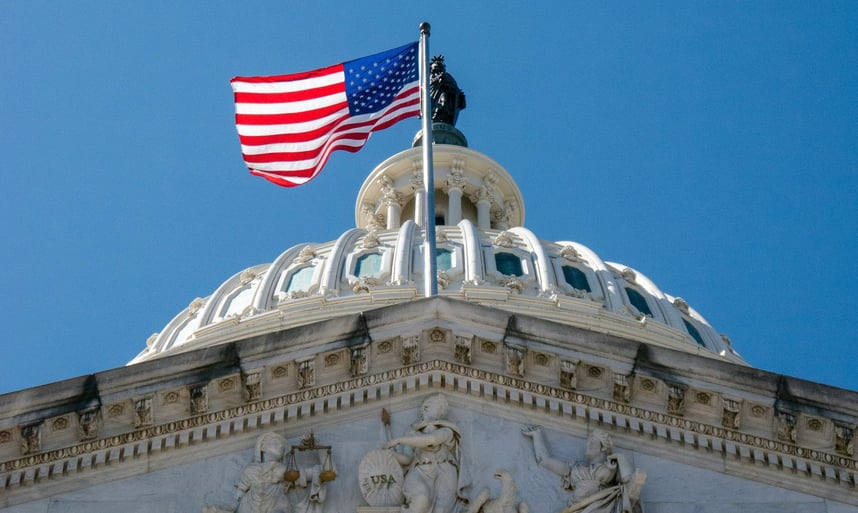U.S. Budget Deficit Tops $316 Billion in May as Debt Costs Soar
ECONOMY


Treasury Data Shows Year-to-Date Deficit Reaches $1.36 Trillion
The U.S. federal government posted a $316 billion budget deficit in May, continuing its slide deeper into fiscal imbalance and bringing the year-to-date shortfall to $1.36 trillion, according to figures released Wednesday by the Treasury Department. The monthly figure, though 9% lower than the May 2024 deficit, still represents a 14% increase in the cumulative shortfall compared to the same period last year.
After briefly posting a surplus in April due to annual tax inflows, federal finances again turned sharply negative in May as spending growth outpaced revenue gains. While receipts jumped 15% from a year earlier and are up 6% year to date, total expenditures climbed 2% for the month and are 8% higher over the same year-to-date span.
The monthly results highlight the growing challenge facing fiscal policymakers as structural deficits remain high even amid steady economic growth and low unemployment. With the annual deficit now exceeding 6% of GDP, several economists and market leaders are sounding alarms about sustainability in the absence of war or recession.
Interest Payments Become Third-Largest Federal Outlay
A major factor in the widening deficit is the sharp rise in debt servicing costs. The Treasury reported that interest payments on the $36.2 trillion national debt exceeded $92 billion in May alone, making interest the government’s third-largest expense behind Medicare and Social Security.
So far in fiscal 2025, the federal government has spent $776 billion on interest payments, putting it on track to surpass $1.2 trillion for the full year. That would represent a historic high in nominal terms, reflecting both the swelling size of the debt and persistently elevated borrowing costs.
Yields on benchmark Treasury securities have remained stubbornly high despite multiple rate cuts by the Federal Reserve over the past year. The 10-year yield, currently near 4.4%, is roughly unchanged from a year ago, as markets remain cautious about inflation and federal borrowing needs.
The sustained level of yields follows an early-year drop that was reversed after President Donald Trump’s April 2 declaration of “Liberation Day” on trade policy, which renewed concerns about supply chain disruptions and inflationary pressures. Since then, bond markets have responded with higher long-term yields, amplifying the government’s financing costs.
Tariff Revenue Offers Some Fiscal Cushion
Amid rising expenditures, one unexpected bright spot for federal revenue has come from tariffs. Gross customs duties totaled $23 billion in May, a significant jump from $6 billion in May 2024. So far in 2025, the federal government has collected $86 billion in gross tariffs, marking a 59% increase from the same period last year.
The increase in tariff revenue follows the Trump administration’s aggressive trade posture, which includes maintaining elevated duties on Chinese goods and expanded enforcement of existing tariffs on imports from other nations. While critics warn of long-term consequences for consumer prices and supply chains, the short-term boost to revenue has partially offset the growing deficit.
Still, customs duties represent only a small fraction of total federal revenue, and the magnitude of the current deficit far exceeds any gains from trade taxes. Moreover, tariffs may indirectly raise government costs if they contribute to inflation or slow economic growth, thereby pressuring both sides of the federal ledger.
Wall Street Sounds Alarm Over Fiscal Imbalance
In recent weeks, high-profile financial leaders have begun to issue stark warnings about the implications of America’s growing debt burden. JPMorgan Chase CEO Jamie Dimon, BlackRock CEO Larry Fink, and Bridgewater founder Ray Dalio have each cautioned that the U.S. faces a growing risk of economic instability if current trends continue unchecked.
The deficit-to-GDP ratio, now exceeding 6%, is nearly unprecedented during peacetime and outside of recessionary periods. Economists note that maintaining deficits at this scale in a full-employment environment is unsustainable without triggering higher interest rates or inflation.
Investors are increasingly attentive to fiscal developments as part of their outlook for interest rates and monetary policy. The Fed is scheduled to meet next week, and while no immediate change is expected, the scale of federal borrowing may influence future decisions about balance sheet management and longer-term rate trajectories.
Meanwhile, political negotiations around the 2026 budget remain fraught, with Republicans pushing for spending caps and Democrats resisting cuts to entitlement programs. The growing cost of interest payments—now nearly 13% of total federal outlays—means that any long-term solution to the deficit will require politically painful trade-offs.
